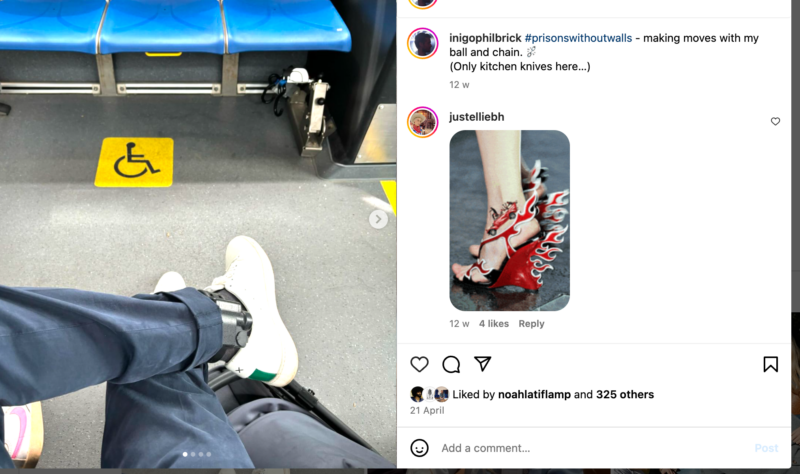View this post on Instagram
If we are honest with ourselves, the pandemic will change very little about people, society or even art. In time, we will forget to savour the small things, we will resolve that keeping public spaces clean is too much effort, and art will again beat its drum to the rhythm of the market. But the artworld should learn an important and, one hopes, enduring lesson from the pandemic: art is something we experience, and not just something we see. And learning this lesson is crucial if we are to avoid the very intellectual fabric of art being eroded and lambasted by travesties such as Van Gogh: The Immersive Experience, which plays into the hands of populism but does egregious harm to the integrity of the experience art.
Contemporary art, more than a little bit buoyed by late capitalism, has a remarkable survival instinct. It survived global financial meltdown by playing to the One Percent, even if that meant leaving the 99% by wayside. Similarly, a year of periodic shutdowns will have done the market little harm: business has been conducted through online viewing rooms and exhibitions have come and gone over the last year with their ordinary regulatory. Some galleries have even gone to the trouble of hanging exhibitions in their deserted galleries, only to be photographed and disseminated to collectors who shop online, as if galleries are a kind of static QVC.
Artists, at all levels and of all kinds, have, in a sense, endured the least disruption to their daily practice. In a state of national lockdown, when there is nowhere to go, nobody to see and nothing else to do, artists have continued to make art. Perhaps even more so than before because the usual interruptions of daily life. Damien Hirst, you’ll be relieved to know, has finished his series of Cherry Blossom paintings ready to preview in Paris. Frank Bowling has joined Hauser & Wirth and opened his inaugural London show. Tracey Emin, David Hockey and Michael Armitage all managed to make vast shows for the RA. Christie’s and Sotheby’s have continued to set records – remember that NFT in March.
None of this is to say that there have not have been setbacks and hardships. It is just to say that art, in the midst of the pandemic and facing total lockdown everywhere, has managed to prove that it can survive. But what does art need to survive? The answer lies in the one thing it lacked and that it had to try to replicate and simulate throughout the pandemic: the interaction between the audience and the artwork. Galleries valiantly tried to weather the storm by staging “online exhibitions”, but were they really exhibitions or just websites? Frankly, and we absolutely cannot abandon aesthetic standards or intellectual probity just because there is a global pandemic on, a few images on a webpage with captions and blurb is categorically not an online exhibition; that is a website, the format of which has been well established for long enough that almost anyone can recognise it when they see it. As such, these crude and ineffectual “online exhibitions” cannot possibly achieve anything more in the effort to connect audience and artwork than a website does. The experience of the artwork is so unlike that of an exhibition that it is nothing short of looking at pictures, which, in many cases, amounts to the maddening notion of looking at digital pictures of pictures.
Still, the galleries were closed, so how else could audiences connect with art? Some places, principally museums, such as the Louvre, offered virtual tours of their collections. This is something more commercial galleries could have and should have done, for even if they only managed a recorded video tour, rather than a full-blown virtual experience, it is still a reasonable simulation of the gallery-going experience. Or you could go full Damien Hirst and use Instagram to give a walking-talking video tour: during the last lockdown, Hirst posted videos in which he pontificated upon each individual work in his ‘End of a Century’ show at Newport Street Gallery, which was pretty much the most delightful, pure and sobering thing we’ve seen this year. All of these methods at least attempt to meaningfully unite the audience with the art in the radical absence of in-person connectivity.
Now galleries are open again, we have rediscovered the immediacy and sensuality and incomparable joy of encountering art in real life, which throws into sharp relief just how important that lived experience is and just how inferior, pale and distasteful the virtual experience is, no matter how technically well-crafted it may be. One wonders how many of those collectors who bought artworks during the pandemic, having seen them as digital images, were disappointed with what they ended up with; and one also wonders how many gallerists secretly broke the rules to avoid just that situation. Deep down, for some of us much less deep down than others, we all know that the digital or virtual representation of art is just that – a representation, a chimera, brilliantly expressed in German as mere Vorstellung – and should not be taken as anything like a simulation or a faithful reflection of either the artwork itself or, still less, the experience of it.









